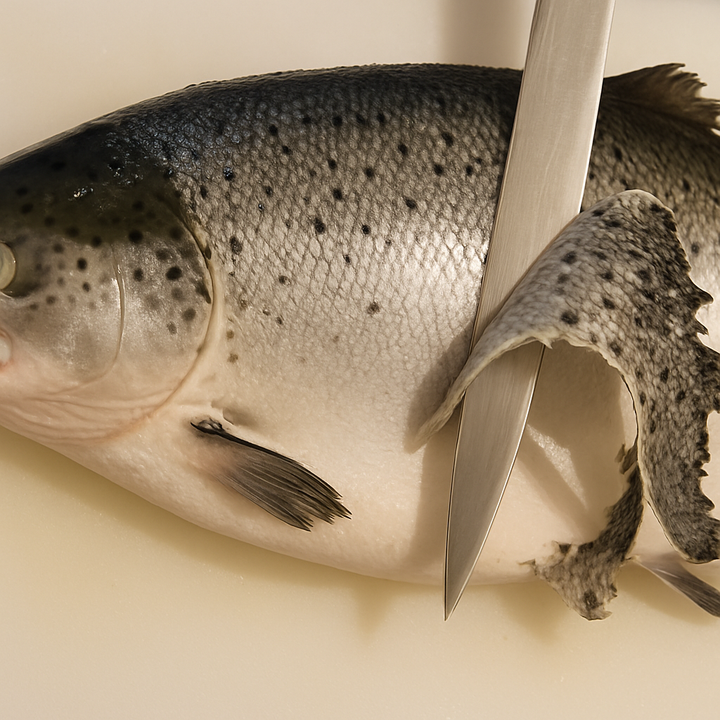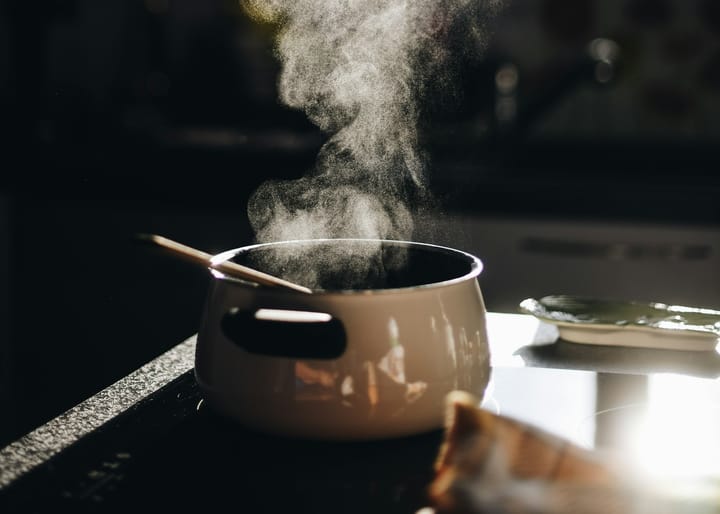Kabuse: The Art of Tea Shading
Shading tea plants has a profound effect on their flavor, contributing to the distinct aroma, rich umami, and vibrant green color of teas like matcha and gyokuro. But how does reducing sunlight—essential for plant growth—lead to such dramatic and delicious changes?

It's well known that shading tea plants dramatically influences the flavor of the tea.
This technique is what gives teas like matcha and gyokuro their distinctive aromas, rich umami, and vivid green hue.
But how does limiting sunlight, something essential for plant growth, lead to such significant and flavorful transformations?
What is Tea Shading (Kabuse)?
Kabuse, or tea shading, is a traditional Japanese technique used to modify the growing conditions of tea plants by covering them with shade several weeks before harvest.
This method, commonly used for premium green teas like Gyokuro and Kabusecha, reduces sunlight exposure, altering the leaves' chemical composition to enhance flavor, aroma, and nutritional value.
Shading boosts the production of theanine, a compound that contributes to the tea's rich umami flavor and smoothness while minimizing bitterness.
By increasing chlorophyll content, the leaves develop a vibrant green color and a refined, mellow taste.
This time-honored practice distinguishes shade-grown teas from their sun-grown counterparts, making them prized in Japanese tea culture.
The Origin of Tea Shading
Tea shading has a long history, particularly in Uji, a renowned region for producing high-quality matcha in Japan.
Farmers in Uji were using the technique of covering tea plants as early as the 15th century.
However, this method was originally intended to protect the sensitive tea buds from harsh cold during extended winters.
To shield the new shoots from frost, farmers would cover them with straw and reed, creating a protective layer.
The exact time when tea shading began to be used for enhancing flavor remains uncertain.
However, according to Mrs. Hashimoto Motoko's The History of Japanese Tea (日本茶の歴史), it may have started during the Tenshô Era (1573-1592).
By the late 16th century, farmers noticed a distinct change in the taste of shaded tea leaves, marked by a rich umami flavor and decreased bitterness.
This discovery became a significant turning point in Japanese tea cultivation, as growers realized the positive impact of shading on the tea’s flavor.
Over time, the practice was refined, leading to the creation of premium teas like Gyokuro and matcha, now celebrated for their unique taste and vibrant green color.
What began as a protective measure against frost eventually evolved into a critical technique for producing some of Japan's finest teas, now known for their exceptional quality and distinctive flavor.
The Science Behind the Green Tea Shading Process
Shading green tea plants is a vital agricultural technique used to enhance the quality of premium teas like matcha, gyokuro, and kabusecha.
By carefully controlling the amount of sunlight that tea plants receive, growers can significantly influence the chemical composition of the tea leaves, leading to unique flavors, aromas, and nutritional benefits.
How Shading Works
- Reduction in Photosynthesis: Tea plants, like all plants, rely on sunlight to photosynthesize, converting light into energy. When shaded, the tea plants receive less sunlight, slowing the photosynthesis process.
As a result, the plant compensates by producing more chlorophyll, which gives the leaves a vibrant green color, and preserves higher levels of theanine, an amino acid responsible for the tea's umami flavor. - Theanine Retention: Theanine is an amino acid that contributes to the smooth, savory umami taste found in high-quality shaded teas. Sunlight typically converts theanine into catechins, which are responsible for bitterness and astringency.
By reducing sunlight, shading helps retain higher concentrations of theanine while limiting catechin production. This balance results in a sweeter, less bitter tea. - Increased Chlorophyll Production: With reduced exposure to light, the plants generate more chlorophyll, intensifying the tea’s deep green color.
Chlorophyll contributes to the fresh, vegetal aroma and gives matcha and gyokuro their signature vibrant hue. - Caffeine Levels: Shading also influences caffeine content. Shaded plants tend to accumulate more caffeine, as they need to enhance their defense mechanisms in low-light environments.
This increased caffeine contributes to the stimulating effects of shaded teas. - Improved Nutritional Value: In addition to enhancing flavor, the shading process boosts the tea leaves’ nutrient content.
Higher levels of vitamins, especially vitamin C, and antioxidants like epigallocatechin gallate (EGCG) are commonly found in shaded green teas, contributing to both the health benefits and overall taste profile.
Shade-Grown Green Tea
While most tea plants thrive under full sun, a small portion is cultivated under proper shading, with only some receiving partial cover from nearby trees.
In Japan, the practice of fully shading tea plants occurs primarily during the first harvest season, known as Ichibancha, which takes place in April and May.
As spring arrives and the young tea buds emerge, farmers begin the shading process to enhance the quality of the leaves.
There are three primary shading techniques, ranked from least to most preferred:
- Jikagise – Direct shading, where covers are placed directly over the tea plants.
- Kanreisha Tana – A canopy shading method that uses a black tarp to block sunlight.
- Honzu Tana – The most traditional and preferred method, employing bamboo and reed canopies for shading.
Jikagise (Direct Shade Method)
The Jikagise method is the most widely practiced shading technique today, primarily due to its ease of use and low cost. In this approach, rows of tea plants are covered with a black plastic sheet featuring small perforations.
For high-quality teas like Matcha and Gyokuro, farmers initially use a cover that blocks 70-80% of sunlight.
After about a week, they often add another layer to increase the shade, reducing sunlight exposure to up to 98%.
These percentages and the shading duration may vary from one farm to another depending on specific preferences and conditions.
Covering the tea bushes in this manner limits air circulation and moisture within the plants.
Additionally, the direct contact between the plastic sheet and the tea leaves can restrict the growth of new shoots.
Farmers must take care not to fasten the covering too tightly. Despite these precautions, this method generally results in lower-grade shaded green teas.
Kanreisha Tana (Canopy Shading)
Canopy shading, known as "Tana" in Japan, is a traditional method that yields higher-quality tea by allowing plants to grow with less restriction and better airflow.
This structure, raised above the tea bushes, creates a shelf-like covering that promotes healthy growth.
There are two main styles of canopy shading:
- Kanreisha: This method uses one or two layers of black cloth, similar to the direct shading approach but supported by wooden or metal poles.
Kanreisha is considered superior to Jikagise for several reasons. The elevated structure allows for better air circulation, reduces heat buildup, and minimizes physical strain on the tea plants.
As a result, the shoots grow upward toward the filtered light, making hand-harvesting easier due to their shape.
Additionally, Kanreisha's use of reusable black plastic tarps lowers the overall production cost of teas like Matcha, making it more economical than traditional Honzu shading. - Honzu: Also known as the "straw mat method," this technique involves using reed mats supported by wooden poles, which are then covered with straw. While it’s more traditional and yields high-quality tea, the materials are not reusable, increasing production costs.
Honzu Tana (Traditional Canopy Shading)
Honzu Tana is the most ancient and revered shading technique for tea cultivation, though it is exceptionally challenging to implement.
Unlike modern methods that use plastic tarps, Honzu relies on traditional materials like bamboo and reed mats, which filter light in a more natural, unpredictable way, similar to sunlight passing through tree leaves.
This method allows for precise control over light exposure, with adjustments made over time—typically reducing light after one and then two weeks of shading.
Honzu shading is considered the highest standard and is usually reserved for producing top-tier teas such as Gyokuro and Matcha.
Despite its prestige, the Honzu method has several significant drawbacks. Constructing the bamboo and reed structure across rows of tea bushes requires a great deal of skill, time, and labor.
Additionally, the natural materials used for the canopy cannot be reused after each harvest, unlike the plastic tarps employed in modern methods.
The structure is also vulnerable to disturbances, especially before the reed mats are secured by rain. Strong winds or storms can potentially undo hours of work, causing significant setbacks.
Due to the complexity and labor involved, Honzu shading is rare, particularly for commercially available Matcha, even within Japan.
While teas produced with Tana-style shading are more costly than those grown using direct shading methods, Honzu-shaded teas command an even higher price due to the intense effort and resources required.


